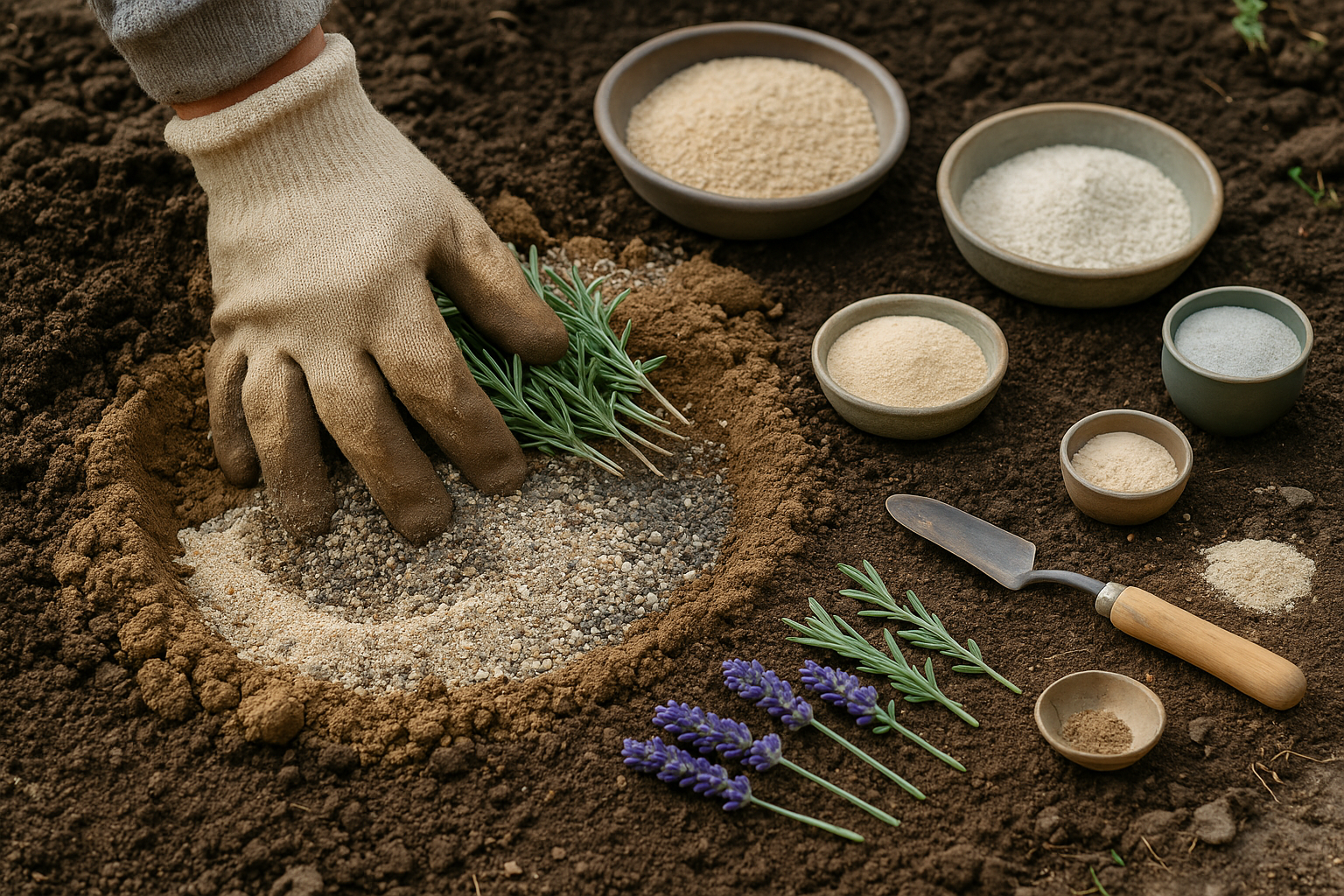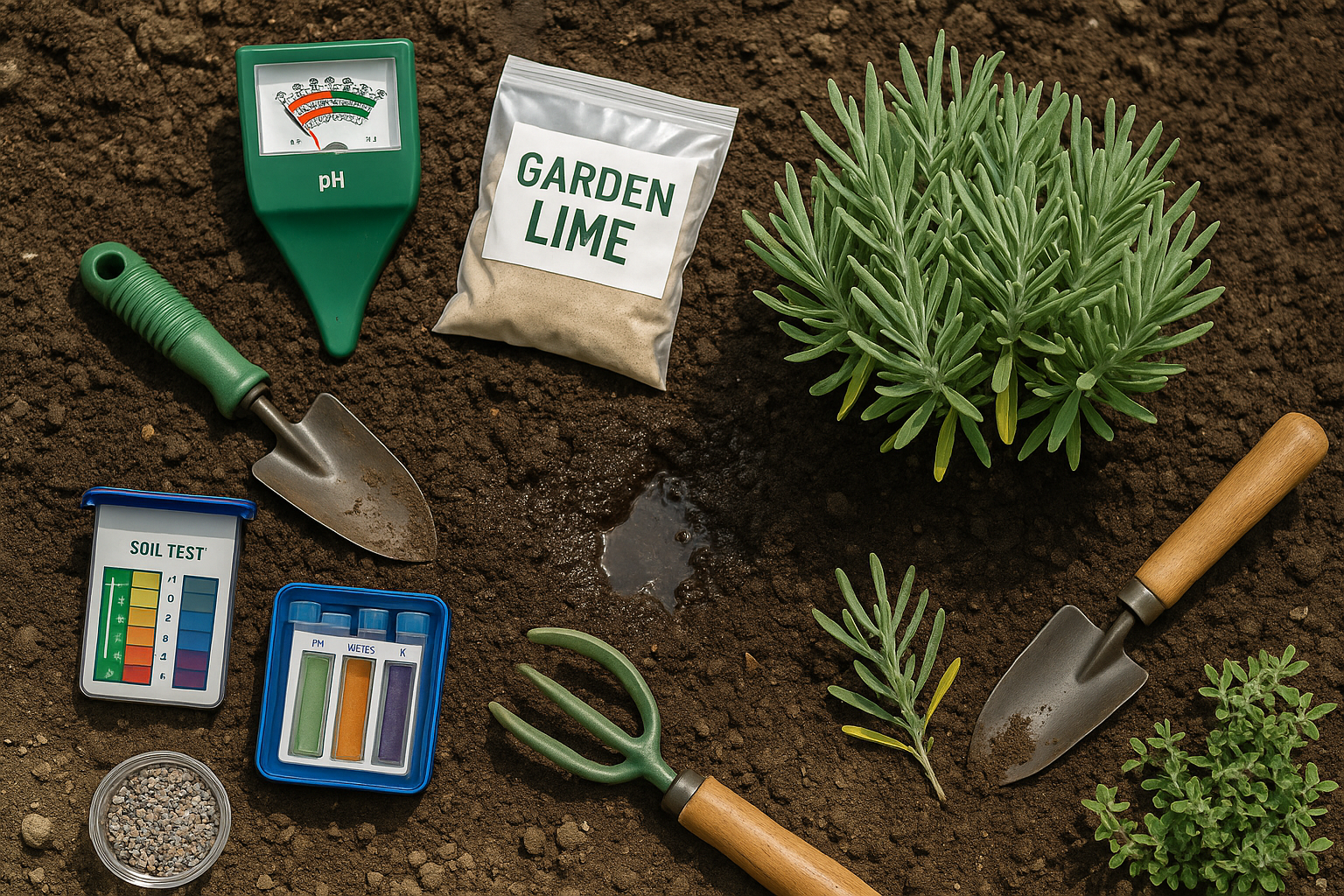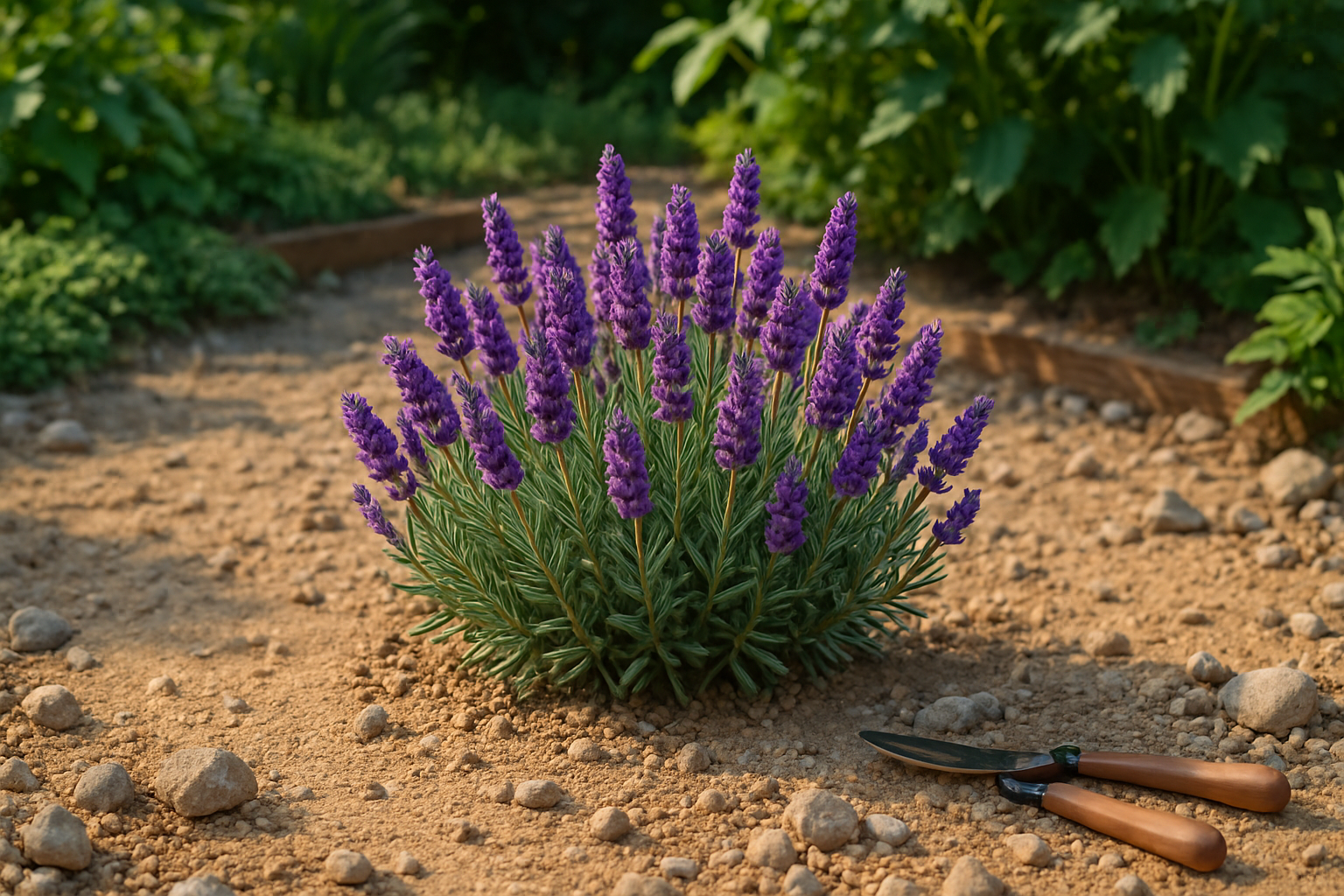Best Soil for Growing Lavender

When it comes to growing healthy, fragrant lavender, well-draining soil is your plant’s best friend. Lavender thrives in sandy or gravelly soils with low to moderate organic matter, so avoid rich, heavy soils that stay wet after rain. If your native soil is clay-based or compacts easily, consider amending it with plenty of coarse sand, fine gravel, or small pebbles to improve drainage—about two parts amendment to one part soil is a good rule of thumb.
For container gardeners, mix cactus or succulent soil with a bit of perlite for extra airflow around the roots. Aim for a neutral to slightly alkaline pH, ideally between 6.5 and 7.5. You can test your soil at home and add garden lime if needed to raise the pH.
Before planting lavender, dig holes twice as wide as the root ball and gently mound the soil to prevent water from pooling near the stems. This simple step goes a long way in avoiding root rot, a common problem for beginners.
Ongoing Care for Healthy Lavender
Proper soil preparation is only half the battle—ongoing care keeps your lavender healthy and blooming year after year. Once established, lavender is drought-tolerant and prefers to dry out between waterings, so only water deeply when the top inch of soil feels dry. Overwatering or consistently damp soil leads to root rot and fungal diseases, so err on the dry side.
To help with this, mulch sparingly around plants using gravel or small rocks. This keeps weeds down without locking in too much moisture, unlike wood-based mulches. Regular pruning in spring and again just after the first bloom helps maintain your plants’ shape and encourages more flowering. A light dose of balanced, slow-release fertilizer in early spring is sufficient—lavender isn’t a heavy feeder, and too much fertilizer can actually reduce flower production.
Watch for signs of stress like yellowing leaves, wilting, or stunted growth, which often point back to soil or water issues.
Troubleshooting Common Problems
Sometimes, despite your best efforts, problems like root rot, poor flowering, or yellowing leaves can pop up. If your lavender seems unhealthy, first check the moisture level by digging down a few inches—if the soil is soggy, hold off on watering and consider aerating or replanting into better-draining conditions.
Consistently yellow leaves may indicate the soil is too acidic; sprinkle a little garden lime around the base and retest after a few weeks. Sparse blooms can result from overly rich soil or excess fertilizer—ease up on feeding and avoid compost-heavy amendments.
For root-bound plants in pots, gently loosen the roots and transplant into a larger, well-drained container. If you spot fungal disease (look for blackened stems or a musty smell), remove affected parts promptly and avoid overhead watering.
By focusing on sharp drainage, lean soils, and careful watering, even novice gardeners can enjoy lush, aromatic lavender beds that thrive for years.
Introduction to Growing Lavender
If you want your lavender to flourish, choosing the best soil for lavender is the first step to success. Lavender has earned its place in gardens around the world thanks to its vibrant flowers, calming scent, and overall hardiness—but the right soil is the secret behind those lush blooms and rich fragrance.
Gardeners often find that even the simplest lavender varieties struggle if they’re planted in unsuitable soil, which means fewer blossoms and less aroma than you’d hoped for. The best soil for lavender should be well-draining, low in nutrients, and slightly alkaline. This might sound specific, but it’s exactly what helps lavender thrive and perfume your garden on warm summer days.
In this post, we’ll explore exactly what makes the perfect soil for lavender and how you can adjust your garden beds—even if your native soil isn’t ideal. Expect clear advice on soil requirements, practical tips for soil improvement, straightforward planting recommendations, and quick troubleshooting for common problems.
Whether you’re growing lavender in beds, borders, or pots, you’ll walk away with real-world strategies to create the healthiest, most aromatic plants possible. Let’s dig in and get your lavender growing right from day one!
Key Soil Requirements for Lavender
Lavender thrives best in well-draining, sandy, and slightly alkaline soils—conditions that closely mimic its Mediterranean origins. Selecting the right soil is crucial, as heavy clay or moisture-retentive soils can easily lead to root rot, stunting the plant’s growth or killing it outright.
When soil holds water for too long, lavender’s roots suffocate and become susceptible to fungal diseases, which are common culprits behind poor lavender performance. The optimal pH range for lavender is between 6.5 and 7.5, allowing it to access essential nutrients without stress.
If your garden soil is dense or acidic, simple amendments can dramatically improve lavender’s chances. Mixing in coarse sand or small gravel increases drainage and prevents water from pooling around the roots—even a ratio of one part sand to two parts native soil can make a difference.
To boost alkalinity, adding garden lime is effective; use a soil test kit to check your pH before and after. Organic matter, like compost, can be used sparingly, but avoid rich or nitrogen-heavy fertilizers—they encourage leafy growth at the expense of flowers.
For gardeners in especially wet or heavy soils, consider building a raised bed filled with a sandy-loam mixture, or plant lavender on gentle slopes or mounds. These simple tweaks replicate lavender’s natural habitat and give you robust, fragrant blooms year after year.
How to Improve Soil for Lavender Success
Lavender thrives in well-draining, slightly alkaline soils similar to its native Mediterranean habitat. Start by assessing your garden’s soil before planting to give your lavender the best chance to flourish.
Test Soil pH
Use an inexpensive home kit to test your soil’s pH—lavender prefers a pH between 6.5 and 8. If your soil is too acidic, add garden lime according to the package directions to adjust it to the ideal range.
Check Drainage
Dig a 12-inch hole, fill it with water, and observe how quickly it drains. If water sits for more than 30 minutes, the soil needs improvement.
Improve Drainage by:
- Mixing in coarse sand or small gravel, working these amendments into the top 12-18 inches of soil.
- Planting on raised beds or broad mounds (12-18 inches high) in areas with heavy clay or stubborn soils to allow water to run off and prevent soggy roots.
Container Planting
If you prefer growing lavender in containers, start with a potting mix labeled for Mediterranean or cactus plants, which ensures excellent drainage. Enhance this mix further by adding extra perlite, sand, or small stones.
Ultimately, properly preparing your soil before planting is the key to lavender success. This groundwork will give your plants the best chance to thrive with less maintenance and fewer problems down the road.
Choosing Lavender Varieties & Placement Considerations
When selecting lavender for your garden, start by considering the main varieties: English (Lavandula angustifolia), French (Lavandula dentata), and Spanish (Lavandula stoechas). English lavender is the classic favorite, prized for its strong fragrance and cold hardiness, making it ideal for temperate climates. French lavender stands out with its ruffled leaves and longer blooming season, thriving best in mild winters but needing protection from harsh cold. Spanish lavender is the most distinctive, loved for its “rabbit ear” flower tops and tolerance for heat, though it’s a bit less hardy in frosty zones.
Regardless of variety, choose a spot that gets at least six hours of full sun daily—lavenders crave sunshine and won’t thrive in shade. Good airflow is essential since dense, damp conditions can cause root rot and fungal problems.
For soil, all lavender types prefer fast-draining ground, though English lavender can tolerate slightly heavier soils compared to others if not waterlogged. If you have clay soil, consider planting lavender in raised beds or adding sand and gravel for extra drainage. Keep each plant spaced apart (at least 18–24 inches) to allow air to circulate, which keeps foliage dry and healthy all season.
Planting & Caring for Lavender in Pots vs. Ground
Choosing whether to plant lavender in pots or directly in the ground depends on your space, climate, and soil conditions. Pots are ideal if your garden soil is heavy or drains poorly, since lavender hates “wet feet” and thrives in loose, fast-draining environments.
Terracotta or ceramic pots that are at least 12-16 inches wide and deep, with drainage holes, work best. Fill them with a gritty, well-draining potting mix—look for mixes designed for succulents or cacti, or blend garden soil with sand and perlite to improve drainage.
In-ground planting works well if you have light, sandy, or gravelly soil. You can further improve drainage by mixing coarse sand or small gravel into the top 8-12 inches. Be sure to give each lavender plant about 2-3 feet of space to allow air circulation, which helps prevent disease.
When it comes to watering, potted lavender needs more frequent checks but less water overall: wait until the top inch of soil feels dry, then soak thoroughly and let excess water drain away—never let pots sit in saucers full of water. For ground-planted lavender, deep but infrequent watering helps build strong roots: water only when the soil is dry a couple of inches down, and avoid overhead sprinkling to reduce the risk of fungal disease.
Whether in pots or the ground, the key is to keep the roots on the drier side—your lavender will reward you with fragrant blooms and lush, silvery foliage.
Troubleshooting Common Soil-Related Problems

If you notice your plants showing signs like yellowing leaves, slow growth, wilting, or even root rot, your soil might be the culprit. Poor drainage is a common issue—compact, heavy soil traps water around the roots, leading to suffocation and rot. To improve drainage, gently mix in organic matter like compost or peat moss to lighten and aerate the soil. Raised beds can also help in areas with heavy clay soil.
Sometimes, the problem is soil pH. Most plants prefer a neutral range (6.0 to 7.0). You can test your soil with a simple kit from a garden center; if it’s too acidic, add lime, and if it’s too alkaline, try incorporating sulfur or organic mulches like pine needles.
Unhealthy soil also attracts pests like fungus gnats, root maggots, and diseases such as damping-off, which all thrive in weak, soggy conditions. Healthy, well-balanced soil encourages strong root development and natural immunity in your plants, making them less susceptible to infestations.
To keep your soil and garden thriving all season long, regularly amend your garden with compost, rotate plant locations, and avoid overwatering. These small steps make a big difference!
Quick Care Tips & FAQ Roundup
Keeping soil healthy around lavender is all about balance—start by ensuring good drainage, as lavender roots hate wet feet. Mix grit or sand into heavy soil and mound plantings slightly to keep water moving away.
Aim for a neutral to slightly alkaline pH (6.5–7.5) and work organic compost in lightly each spring, but never let the soil get soggy or compacted.
Skip high-nitrogen fertilizers; instead, use a bit of bone meal or a slow-release, balanced feed once a year.
Many gardeners ask how often to amend soil—usually once each spring is plenty unless you notice poor growth or yellowing leaves.
Wondering if lavender needs rich soil? Actually, it thrives in lean, well-drained conditions.
If your region is especially rainy or clay-heavy, experiment with adding more grit each season; small tweaks can make a big difference.
Don’t be afraid to adjust—local soil and climate always play a role in success.
